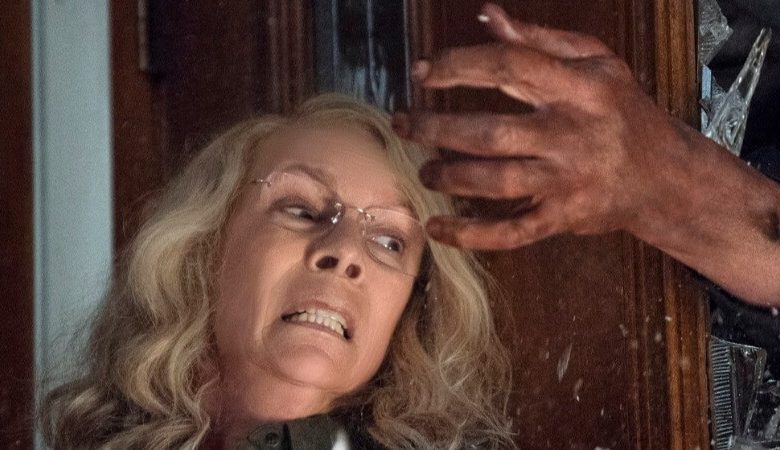Can You Spot the One Thing Missing in ‘Halloween?’

It’s official. Michael Myers is back on the A-list.
The serial killer from the “Halloween” franchise returned this weekend. His first film since Rob Zombie’s “Halloween II” nine years ago could earn as much as $80 million once all the ticket sales are tallied.
That’s a monster-sized opening. Can another sequel be far behind?
The new film delivered everything we expect from a slasher film, the horror genre that ruled the ’80s?:
- Imaginative kills
- Creepy music
- Villains that just won’t die
- Jump scares
- Tension-snuffing laughs
- Final girl(s)
Can you guess what’s missing?
Boobs.
Yes, there’s very little nudity in the new film. The sole shot that merited a “nudity” warning from the MPAA? A scene flashing back to the original “Halloween” circa 1978.
The moment isn’t titillating. Nor does it linger on screen for long. That matters, and not just from a creative context.
The ’80s slasher era loved nudity, specifically the female kind. These moments were typically gratuitous, meant to ramp up the grindhouse tone. Teens flocked to these movies for the chills, the thrills … and the scantily clad starlets.
Movie mavens across the web routinely ranked those particular scenes:
- 13 Best Nude Horror Movie Kills of All Time
- 15 Horror Movies Watched For Their Skin More Than Their Scares
- The 15 Best Topless Moments In Mainstream Horror Movies
Roger Ebert once commented on the nudity horror trend on his signature show alongside Gene Siskel:
“The nudity is always gratuitous,” said Ebert. “It is put in to titillate the audience and women who dress this way or merely uncover their bodies are somehow asking for trouble and somehow deserve the trouble they get. That’s a sick idea.”
So why would a sequel like “Halloween,” which embraces every slasher movie trope it can find, leave out the nudity?
The word “woke” rushes to mind.
Plenty has changed about film culture since Laurie Strode escaped Michael’s clutches 40 years ago. One recent evolution? Hollywood’s newly enlightened status. The industry can still churn out movies with guns and gore galore. Movie nudity is … complicated, to steal a Facebook phrase.
Even films where the female lead agrees to be nude might be excoriated by cultural critics.
Hollywood has been minimizing on-screen nudity for some time. Jennifer Lawrence’s nudity in “Red Sparrow” proved both shocking and rare for an actress of her stature. Genre movies still deliver nudity, but it’s less common in mainstream fare.
Actresses have more say in whether they appear nude on screen or not, an unabashedly positive trend. Activists routinely call out films that offer skin for litle reason beyond the “male gaze.”
#Bollywood likes to capitalise off #feminism while still catering exclusively to the male gaze. https://t.co/oJiu1Wp1d4
— Feminism in India (@FeminismInIndia) November 7, 2017
It’s both a sign of growing respect for actresses and a nod to our sensitive times. A lack of nudity now packs an empowering undertone, one that oddly aligns with slasher fare.
The first “Halloween” unofficially kicked of the “Final Girl” slasher film trope. It’s the female character who either saves the day or simply lives to see another one. It’s an unusually feminist tone from an otherwise straightforward genre.
It’s ironic that Curtis kept her clothes on in the original “Halloween.” Yet she bared her chest in the 1983 comedy “Trading Places” and stripped down to her underwear in “True Lies.”
RELATED: 14 Netflix Horror Movies to Keep You Up at Night
“Halloween” producer Jason Blum caught heat recently for failing to hire female directors on his low budget, high profit horror films. He hastily apologized, cowed by the PC Police.
Blum won’t catch any media flak over the lack of gratuitious nudity in “Halloween,” though.
